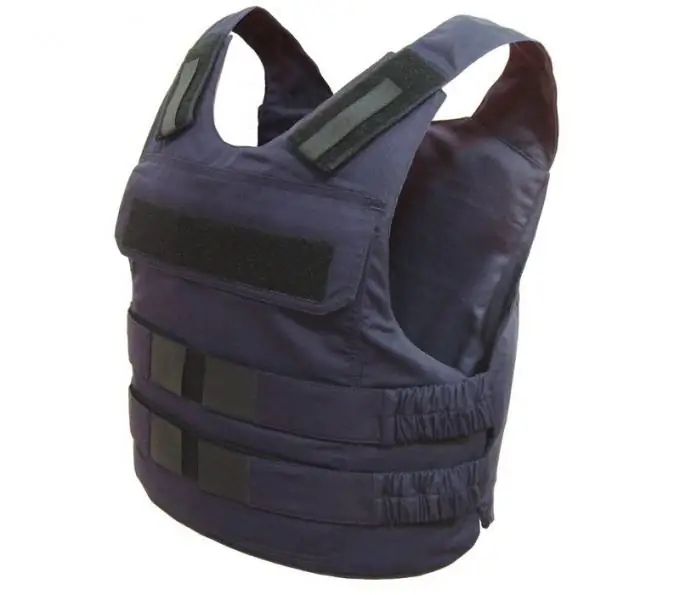- Author Nora Macey [email protected].
- Public 2023-12-16 10:17.
- Last modified 2025-01-23 08:47.
As a means of individual protection, the body armor protects the body from fatal wounds (from firearms and cold weapons, shell fragments and mines). Bullet-proof vests are necessary during hostilities, and they are also required to be worn by people working in law enforcement, military and security structures.

Production of body armor
The purpose of the body armor is to protect the human body (namely the upper part of the body - the torso). Thanks to the high-strength materials from which it is made, it is able to keep the most vital organs located in the abdominal cavity and chest intact. Typically, such a protective device consists of materials that have saving qualities - protection from bullets and shrapnel, as well as dissipation of their energy.
The materials that are most often used to create body armor include: kevlar, aramid, steel, titanium, ceramic plates. For Russian companies that sew bulletproof vests, the most typical use of such ballistic fabric as Kevlar.
Body armor is sewn from 30-50 layers of ballistic fabric and batting (for a damper pillow), and all details, without exception, are sewn with reinforced threads. The final stage of creating a suit is that armor elements (plates of titanium, steel or ceramics) are inserted into the previously prepared pockets.
The more layers a vest is made of, the more reliably it protects a person, however, in proportion to this, the ability to move quickly is lost due to the increasing weight of the product. Therefore, manufacturers are trying to find a middle ground.
It is worth distinguishing a body armor from an armored suit (used for special purposes by sappers, for example).
What are the types of body armor
According to the established standard, body armor is divided into three types: A, B and C. Type "A" is a fabric-based body armor (the so-called soft or flexible). Semi-rigid body armor, based on armor metal plates, belongs to type "B". And type "B" is a highly protective body armor (based on rigid plates made of special armored metal).
The classification in Russia has 10 classes of body armor: 0, 1, 2, 2a, 3, 4, 5, 5a, 6, 6a. Each of the classes assumes a certain level of protection against firearms and melee weapons and means operation at different levels of threat (for example, class 0 is protection against melee weapons). So, flexible body armor of type "A" is unlikely to protect the ZhVO from firearms, which are capable of piercing even its base, but will protect against the penetration of bladed edged weapons. Today there are a large number of models of body armor from various manufacturers.
Features of body armor
A bullet-proof vest is not a weak load, it is very difficult to wear it for a long time. The weight of the body armor can be from 2 to 20 kg. It makes it difficult to move quickly and exerts strong pressure on the body, and as a result of a violation of heat transfer, it can cause heatstroke and loss of consciousness. Constant use of body armor negatively affects health. Despite the high degree of protection, body armor does not protect against armor contusion injury as a result of armor displacement.






